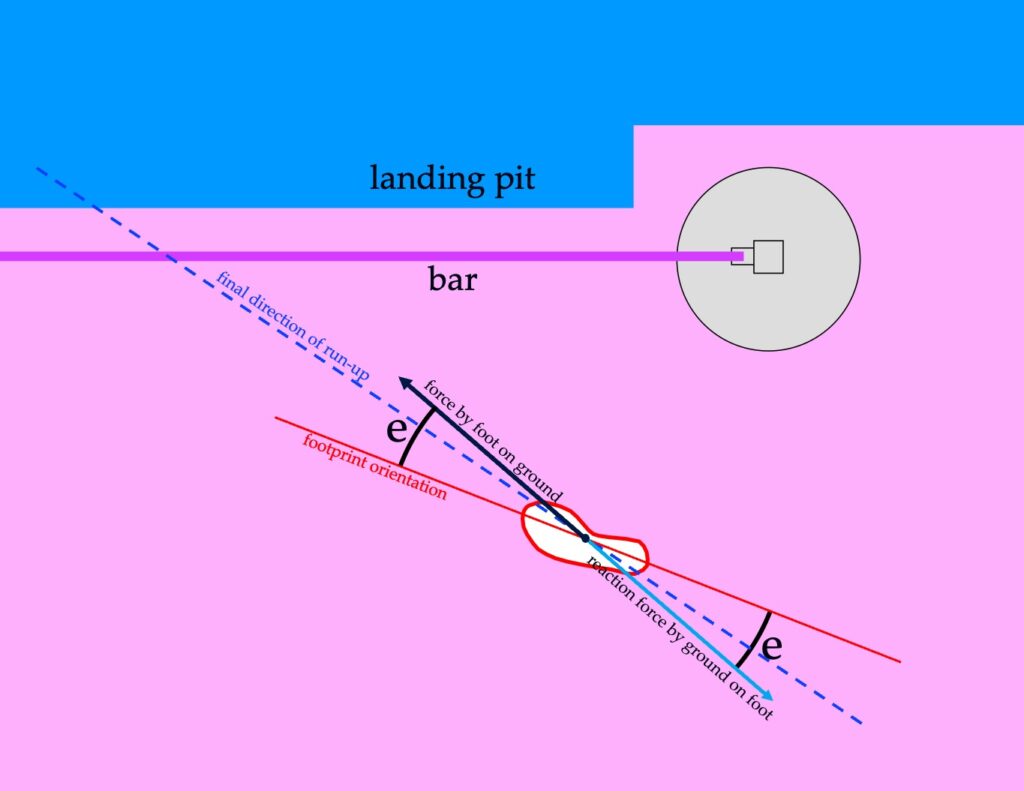Ankle Pronation in High Jumping
by Jesús Dapena
(email: dapena@iu.edu)
This is a biomechanical explanation of the mechanism that can produce ankle pronation and ankle injury in high jumping.
Why is there often ankle pronation in the high jump takeoff?
After planting the takeoff foot on the ground, high jumpers push on the ground vertically downward, but also horizontally. The horizontal force that the foot makes on the ground points essentially forward. It is almost in line with the final direction of the run-up. But usually it’s also deviated slightly toward the landing pit. (See the graphic below.)
High jumpers also plant the takeoff foot with its longitudinal axis (“footprint orientation”) pointing roughly forward. But the footprint orientation is not quite aligned with the final direction of the run-up. It’s also even less aligned with the horizontal force that the athlete makes on the ground. It’s more parallel to the bar than either one of them. Therefore, the horizontal reaction force that the foot receives from the ground is usually not aligned with the footprint orientation. There is a misalignment angle between them (“e” in the graphic). Because of this, the force tends to make the foot roll inward. You can see this rotation of the foot clearly in this excellent video posted by “Jumper one”.

In anatomical terminology, the inward roll is called “pronation of the ankle joint”. It stretches the medial side of the joint, and compresses the lateral side of the joint. If the pronation is very severe, it can lead to injury of the ankle. Pronation also makes the foot be supported less by its outside edge, and more by the arch of the foot. This can lead to injury of the foot itself. Therefore, in high jumping it’s important to plant the foot aligned as close as possible with the final direction of the run-up, and definitely never parallel to the bar.
